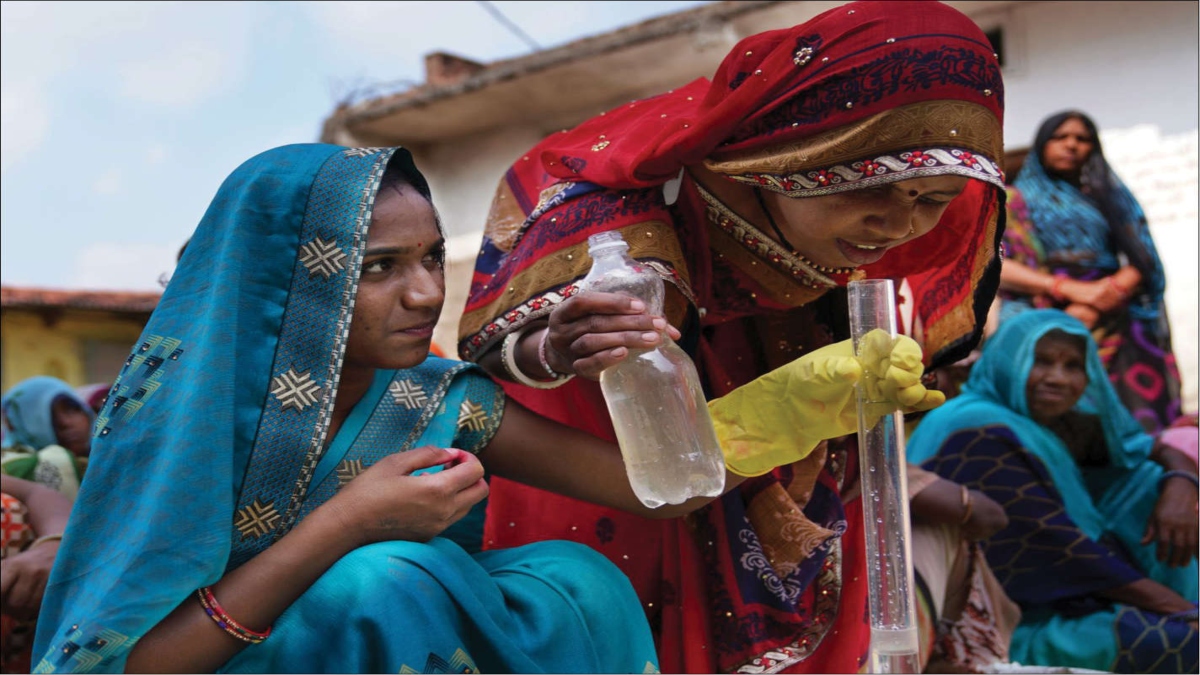
As per the NITI Aayog’s report, 600 million people, nearly half of India’s population, face extreme water stress. Three-fourths of rural households in the country do not receive piped/potable water and depend on open sources, which is a serious health risk. 70% of the water source in India is contaminated. India ranks 120th out of 122 nations in Global Water Quality Index. Water-borne diseases impact our country, leading to 200,000 deaths.
The water sector’s looming water crisis call for urgent action, especially regarding women’s social rights and empowerment as they bear the brunt. Lack of water in a household affects women the most since they play a pivotal role in water collection and use of water for domestic purposes. Any water supply hurdle leads to substantial economic and social impact, disproportionately affecting women. For instance, water collection time and efforts detract from women’s ability to contribute to income generation, impact girls’ school attendance, and interfere with the time required to tend the sick at home. In India, women spend an average of 150 million workdays every year fetching water resulting in school dropouts compromising their health and hygiene. There is substantial improvement in transparency, leadership, and better management of water supplies when women are equally involved.
The water landscape in India is changing fast under the ambitious Jal Jeevan Mission (JJM) project, that aims to provide a functional tap water connection to each rural home by 2024. There is an incremental 29% tap connection in rural India since the beginning of the Mission in 2019 benefitting the women and girl child by reducing drudgery and freeing time for economic activities, girl child going to school. Another salient feature of the Jal Jeevan Mission is training women to use Field Test Kit for testing water quality, reporting and surveillance. The government, NGOs, and corporates are educating women and curating vocational training to bring them to the forefront in water supply operations and management rather than being entrusted with their traditional roles within the household.
ENSURING PARTICIPATION
If the current water crisis continues, India may lose 6% of its GDP by 2050. But, on the brighter side, the IMF estimates that equal participation of women in the workforce will increase India’s GDP by 27 %.
Leading by example is the Jal Jeevan Mission, which has played a significant role in bringing ‘ease of living to rural communities, especially women. Women are leading JJMs in their villages to meet their water needs as well as aspirations. Rural women are also taking on roles formerly held by men, such as that of plumber, mason, or electrician. Communities are being encouraged to actively participate and develop a participatory model addressing their water concerns on their own.
Under the JJM, five women are being trained on water quality testing using Field Testing Kits (FTKs). The women are also trained to lead sanitary inspections in the villages, which will ensure regular cleanliness checks and the health of the water supply systems. They are provided with FTKs to take up regular water quality testing and upload the data on the JJM portal. Safe and unsafe water sources are identified for all to see. This exercise creates awareness about the hazards of unsafe water so that collective action can be taken at the community level.
The effectiveness of these programs lies in ensuring quotas for women. During the initial phase of the implementation of the Har Ghar Jal scheme by Jal Jeevan Mission, women had only 30% representation in the Pani Samitis. Over time, their representation has increased. Under JJM, at least 50% of Pani Samiti members are women. Many states, including Gujarat, give women more than 50% representation in the Pani Samitis. Women must also be given leadership positions. They should be encouraged to take on leadership roles occupied mainly by men today.
Likewise, the Atal Mission for Rejuvenation and Urban Transformation 2.0 or AMRUT 2.0, aimed at making cities water secure, ensures community participation, focuses on women, and self-help groups to be co-opted in water infrastructure management and quality assessment.
To achieve women’s empowerment in the water sector in the true sense, we need women in the planning design, operations, and management of water supply at the Water Boards and PHEDs too. Women are needed at the technical and managerial levels in the water supply. It has proven that solutions co-developed by men and women have higher service delivery and sustainability impact. Girls should be inducted and mentored for these functions as a part of the education curriculum from an early age.
Women’s inclusion in water has to be driven. It should be mainstreamed and treated as an objective tool to attain other development goals. Empowering women with tap water at home, educating them to make an informed decision on the water they consume, protecting their drinking water sources wilfully, and living a healthy and hygienic life is the firsrt important step.
The Author is Vice President – Program & Partnerships, Safe Water Network